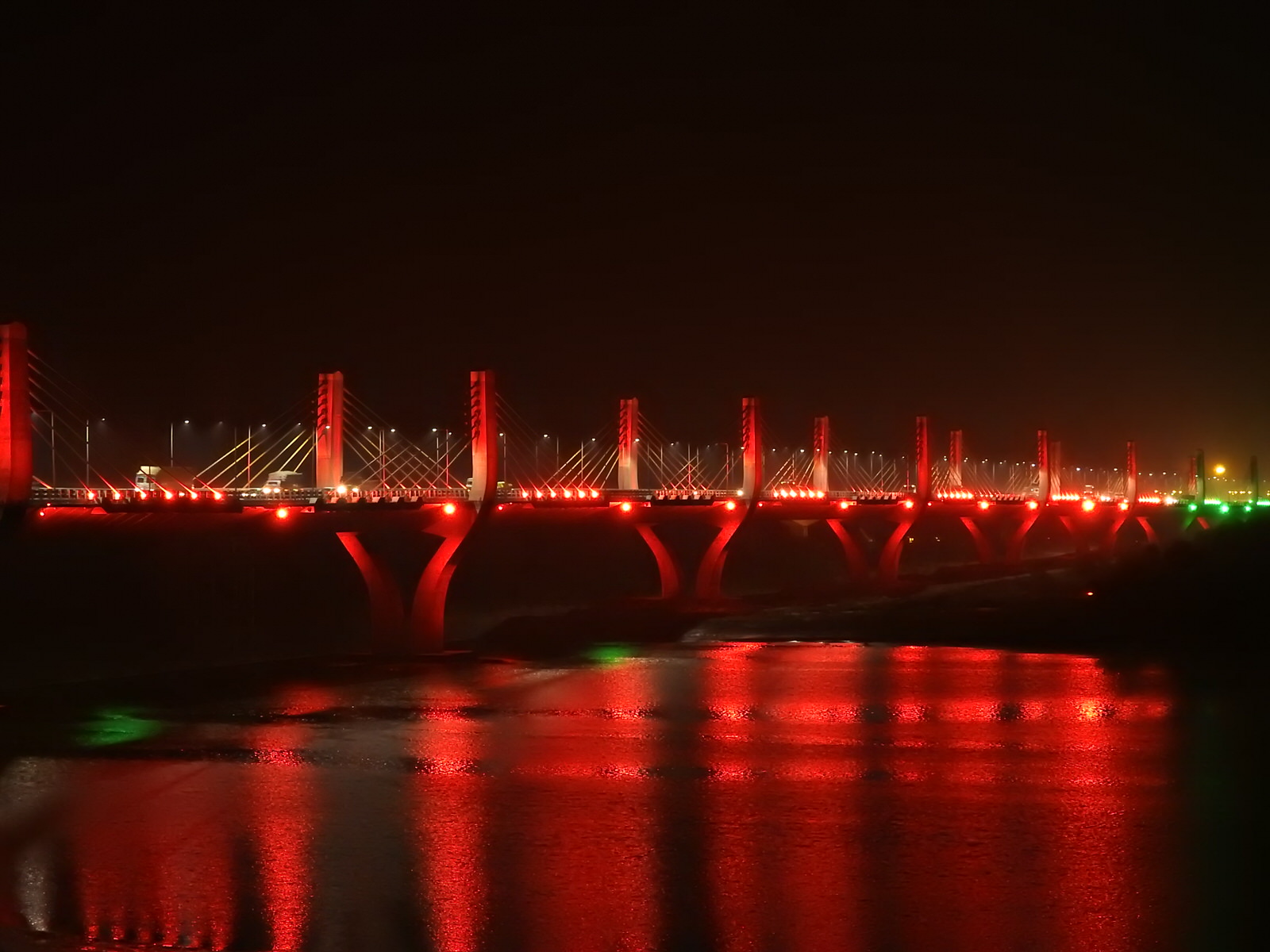Bharuch, formerly known as Broach, is a city at the mouth of the river Narmada in Gujarat in western India. It is the oldest city of Gujarat. It is also the second-oldest city of India having continuous inhabitation, first being Kashi (Varanasi). It has a known history for about 8000 years.
Being one of the biggest industrial areas including Ankleshwar, it is also referred to as the chemical capital of India. The city and its surroundings have been settled since times of antiquity. It was a ship building centre and sea port in the pre-compass coastal trading routes to West, perhaps as far back as the days of the Pharaohs. The route made use of the regular and predictable monsoon winds or galleys. Many goods from the Far East were shipped there during the annual monsoon winds, making it a terminus for several key land-sea trade routes.
Bharuch was known to the Greeks, the various Persian Empires, in the Roman Republic and Empire, and in other Western centres of civilisation through the end of the European Middle Ages. In the 3rd century, it’s port was mentioned as Barugaza. Arab traders entered Gujarat via here to do business.
Bharuch has always been prosperous because of its location on the Narmada River. Although water tends to be scarce in Gujarat, one never finds difficulty in getting water here. As a result of this, agriculture and other linked commercial activities have flourished. It is also a central stopping point for many villages spread around its boundaries. People from these small villages come here when they want to shop for new clothes, or make a major purchase. Lately a lot of retiring expatriates have been returning and building new houses giving the economy a boost.
Traditionally, Bharuch has been the centre of the peanut processing and marketing industry with a well established brand name around the country. Almost none of the peanuts are grown in Bharuch itself but the best of the crops from neighbouring regions are brought here for processing. Mr. Ruchik Amrish Jani a local resident and businessman holds the Intellectual Property rights for manufacturing roasted salted peanuts in a hygienic process. Bharuch is also the home of the Bandhni method of clothing design and is well known for this traditional art form.
 |
| India’s longest cable bridge covering 1.4 kms. There are more than 400 LED lights on the bridge. |
 |
| Colorful lights on India’s longest cable bridge, covering 1.4 kms. |
 |
| The temple of Bhrigu Rishi, one of the famous and sacred temples of Gujarat, is situated on the east of the city in Dandia Bazar area on the banks of the holy river Narmada. |
 |
| The temple of Bhrigu Rishi |
 |
| The temple of Bhrigu Rishi |
 |
| Gurdwara Pehli Patshahi is a Memorial Shrine present in Bharuch City, which was made in memory of Baba Nanak’s visit during his Missionary Journey. From here Guru Nanak Dev continued his journey to North India. According to Sikh Mythology, When Guru Sahib reached the bank of the river, the local king denied boat to Guru Sahib; then Guru Sahib asked his disciple to lay a Chadar (a piece of cloth) on the water. He obeyed the order of the Guru and to the surprise of everyone, they crossed the river on Chadar. Gurdwara Sahib has been named as Chadar Sahib. |
 |
| Gurdwara Chadar Sahib. |
 |
| The Golden Bridge connects Ankleshwar to Bharuch in the Gujarat state of western India. It was built in 1881 by the British, who needed a bridge across the Narmada River. The Golden Bridge has seen many floods and natural disasters like earthquakes, but it has stood for over 130 years, providing daily transportation to the people of Ankleshwar and Bharuch. The length of the Golden Bridge is 1412m. |
 |
| Swaminarayan Temple |
 |
| Swaminarayan Temple |
 |
| Swaminarayan Temple |
 |
| Swaminarayan Temple |
 |
| India’s longest cable bridge |
 |
| The Narmada happens to be one of the most sacred & revered river of India. |
 |
| Nilkantheshwar (Shiva) Temple is one of the most spiritual places situated near the banks of Narmada River. |
 |
| Nilkantheshwar (Shiva) Temple |
 |
| Nilkantheshwar (Shiva) Temple |



















Comments
Post a Comment